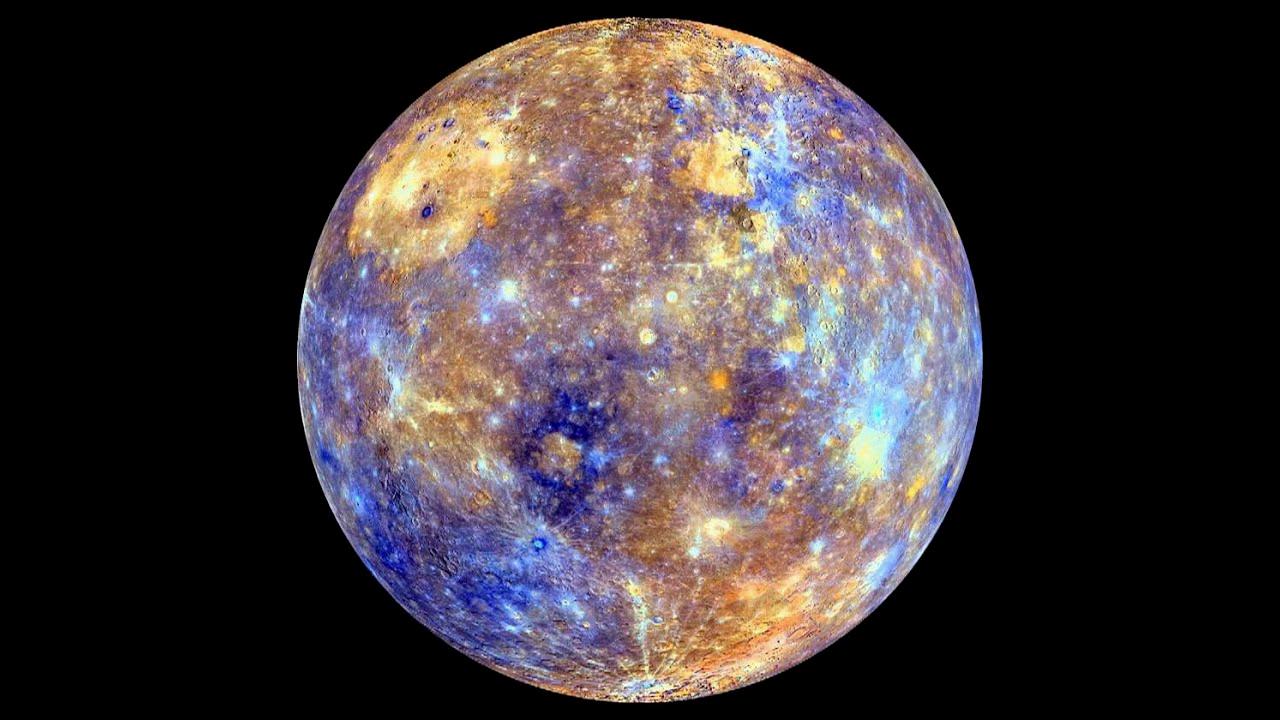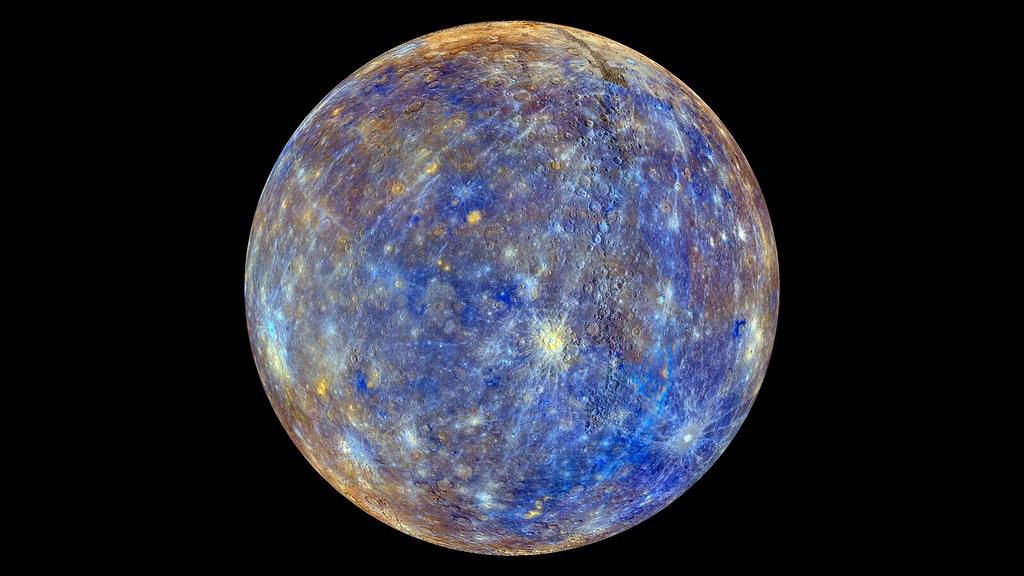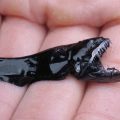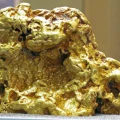Have you ever wondered what color Mercury is? When viewed from Earth, the planet Mercury appears as a small, gray blur. However, up close, scientists have been able to discern a much more vibrant set of colors on the surface of this innermost planet.
The predominant color of Mercury is gray. This grayish-tan hue is caused by the dust and rocks that make up the surface of the planet. The rocks on Mercury’s surface are mostly made up of silicates and iron oxides, which are responsible for its grayish appearance.
In addition to its primary gray hue, Mercury also has patches of lighter colors such as white and blue. These lighter colors are caused by a combination of materials such as calcium sulfate and carbonate, which are reflective in nature and give off a bright white or blue hue when exposed to sunlight.
Recently, planetary geologists discovered an area on Mercury’s surface called “The Spider,” which consists of deep trenches and craters that have a slightly different hue than the rest of the planet’s surface. The Spider’s unique coloring is due to its composition being slightly different from that of other areas on Mercury; it contains more magnesium-rich material than other areas on the planet.
Elemental or metallic mercury is also silver-white in color and liquid at room temperature – completely different from its solid state form found on the surface of the planet. This form has been used in older thermometers, fluorescent light bulbs, and some electrical switches and is oftn referred to as quicksilver due to its resemblance to liquid silver.
So next time you look up at night sky and wonder what color Mercury is, take comfort in knowing that it’s not only comprised of shades of grey – but also blues, whites, and even some unique colors found only in certain areas!
The True Color of Mercury
The real color of Mercury is actually a dark gray. This is due to its rocky surface, which is covered with a thick layer of dust that reflects and absorbs sunlight in a unique way. The dust on the surface of Mercury is composed mostly of iron-rich silicate material, which gives it its dark gray hue. Additionally, the atmosphere of Mercury contains trace amounts of sulfur and other elements which can affect its overall coloration.

Source: youtube.com
The Color of Mercury
Mercury’s surface is predominantly a dark gray color, with an occasional lighter patch. There is no orange color on the planet’s surface, although some astronomers have reported seeing a reddish hue when viewing Mercury from Earth. This could be due to the planet’s proximity to the Sun and its thin atmosphere, which scatter sunlight and give it a reddish tint.
Is Mercury Truly Blue?
Yes, Mercury is indeed blue! NASA’s Messenger probe has revealed that the solar system’s innermost planet appears iridescent blue when viewed up close. The planet is dominated by patches of sandy-colored plains, with strands of grayish white adding to its unique color palette. Additionally, central portions of the planet are relatively darker than the rest due to higher concentrations of iron in the soil. So while Mercury may look like a dull grey blob from afar, it is actually quite colorful and fascinating when studied up close.
Is Mercury Orange?
No, Mercury is not an orange. While it may be analogous to an orange in terms of its structure, Mercury is a planet composed of a huge iron-rich core, a mantle and a crust that is much thinner than the rind of an orange. Its core makes up about 75% of Mercury’s mass and is composed primarily of iron, nickel and other heavy elements. It does not contain any juicy or fruity bits.

Source: cbsnews.com
The Color of Mercury
Yes, Mercury is green. It reflects mainly green rays of the spectrum and its surface appears to be a bright green color. The color of Mercury is actually caused by the presence of iron oxide, which gives it a distinctive green hue when viewed from space.
Does Mercury Have a Rainbow-Colored Appearance?
No, Mercury is not rainbow colored. The images taken by NASA’s Messenger spacecraft and released in the probe’s final days show that the planet’s surface has a variety of different colors due to its mineral composition. These colors range from bright yellow to dark gray, but there are no vivid or intense colors like those seen in a rainbow. The differences in color indicate different mineral types on Mercury’s surface and can help scientists understand the planet better.
What Does Mercury’s Surface Look Like?
Mercury’s surface is a mix of gray, rocky terrain and craters, much like Earth’s Moon. The planet has no atmosphere to protect it from impacts, so its surface is heavily cratered and pitted. Its gray coloration comes from its iron-rich soil, which is exposed to intense solar radiation. Mercury also has many long cliffs and valleys that were created when the planet cooled and contracted over time. Additionally, its surface is pitted with small dark spots called “hollows” which are believed to be caused by meteorite impacts that melted the top layer of the planet’s surface.
Does Mercury Experience Darkness?
Yes, Mercury can be dark. Mercury’s surface is much darker than that of other rocky planets in the Solar System, and scientists have long wondered why this is so. Recent research has revealed that Mercury’s dark material originates from the depths, suggesting that it once had a graphite crust. This graphite would have absorbed light, making Mercury appear dark even when illuminated by the Sun. In addition to this, scientists have found evidence of organic molecules on Mercury’s surface, which may also contribute to its darkness.
The Reason Behind Mercury’s Black Color
Mercury’s dark surface is believed to be due to the presence of carbon in its 4.6-billion-year-old crust. Carbon has a unique ability to absorb and reflect light differently than the other elements making up Mercury’s surface, resulting in an overall darker hue. This is especially true when the carbon is present in the form of graphite, which has been found on Mercury’s surface. In addition, meteorite impacts over time have created a layer of dark dust that further contributes to the planet’s dark appearance.

Source: flickr.com
Conclusion
In conclusion, Mercury is a dark gray color with occasional lighter patches of sandy-colored plains and strands of grayish white. Its surface is rocky and covered with a thick layer of dust. Up close, the planet looks iridescent blue. Elemental or metallic mercury is a shiny, silver-white metal, historically referred to as quicksilver, and is liquid at room temperature. The color of Mercury reflects its makeup and how it absorbs and reflects sunlight.












